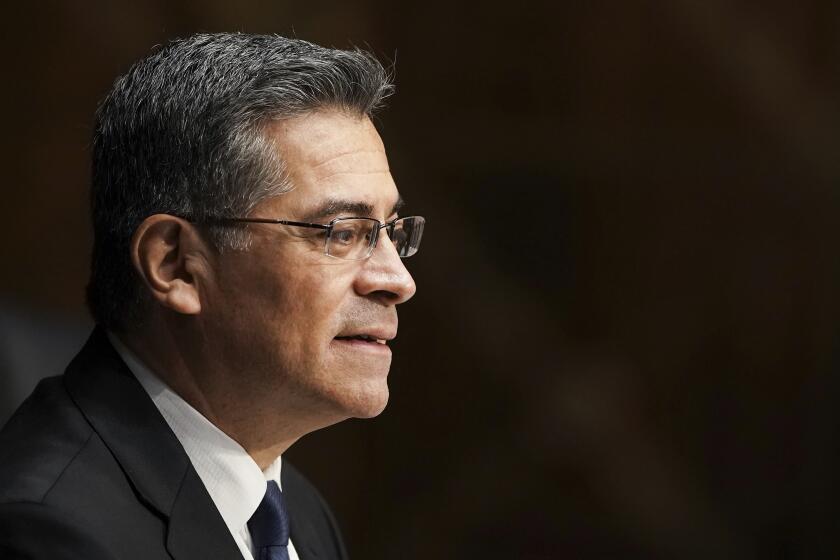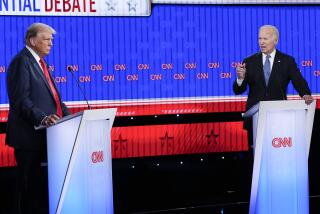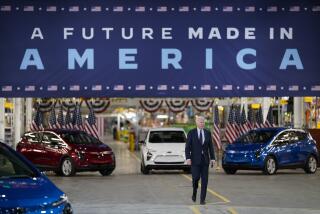Editorial: Biden set the right climate goal. Now we have to meet it

- Share via
Now, of course, comes the hard part.
President Biden opened an international climate summit Thursday with a pledge that the U.S. would reduce carbon emissions by 50% by the end of the decade. It’s an appropriate and reachable goal, per the experts, but one that will take sweeping efforts, actions and investments.
Regrettably, Biden didn’t describe his road map for getting there, but he has included some elements in earlier proposals, such as ending the use of fossil fuels to produce the nation’s electricity and adding at least 500,000 electric vehicle charging stations to shore up consumer interest in electric vehicles (a proposal he offered in his campaign).
Reports out of D.C. raise questions about Xavier Becerra’s Health and Human Services Department and the processing of unaccompanied minors. The whole government needs to do better.
He laid out a big-picture vision in his comments, tying the effort to job creation. “I see an opportunity to create millions of good-paying middle-class union jobs,” Biden said, describing “line workers laying thousands of miles of transmission lines for a clean, modern, resilient grid” and others working to seal off abandoned wells and mines, “putting a stop to the methane leaks and protecting the health of our communities.”
He also called for using hydrogen to more cleanly power heavily polluting steel and cement plants, and for persuading farmers to use “cutting-edge tools to make soil of our heartland the next frontier in carbon innovation.”
Lots of vision, not a lot of details.
This will not be easy. And although a unified federal government leading the charge is vital, much of the onus will fall on consumers who have been slow to buy electric vehicles instead of the gas-powered pickup trucks and SUVs with which they’ve been so enamored.
And by some estimates, new motor vehicles remain on the road for an average of 11 years before being scrapped, which means more than half of the 15 million new vehicles expected to be sold this year will still be burning gasoline in 2030 unless the government comes up with a transition plan. (Biden has suggested reviving the Obama administration’s “cash for clunkers” program to incentivize car owners to switch to electric or hydrogen cell vehicles.)
Further, nearly half of U.S. homes are heated with gas furnaces; converting those to electric fuel pumps or other sources will be expensive. Americans love their beef and other meats, but raising the animals — particularly cattle — is a significant contributor to the problem. Not only do the animals emit copious amounts of methane, but ranchers around the globe also are clearing critical carbon-sucking forest for pastureland.
And on and on. Burning fossil fuels undergirds much of our existing economy; that’s what needs to change.
Judge Carter’s order is not the way to go.
So it’s good that Biden has declared this ambitious goal, and that other countries are pushing similar though in many cases less-ambitious agendas. But that sets up a political challenge for the president domestically. Republicans, following the lead of former President Trump, balk at such significant and expensive changes in the U.S. so long as other countries — especially economic rival China — do not make them too.
That’s foolish. The science is clear that human activity is propelling climate change, and the costs of delaying an effective response run well into the trillions of dollars. And historically, the U.S. has been the largest contributor to carbon emissions — it is what powered our industrial rise and wealth.
It’s clear the U.S. must lead by act and moral example, and bring the rest of the world with us.
More to Read
A cure for the common opinion
Get thought-provoking perspectives with our weekly newsletter.
You may occasionally receive promotional content from the Los Angeles Times.












